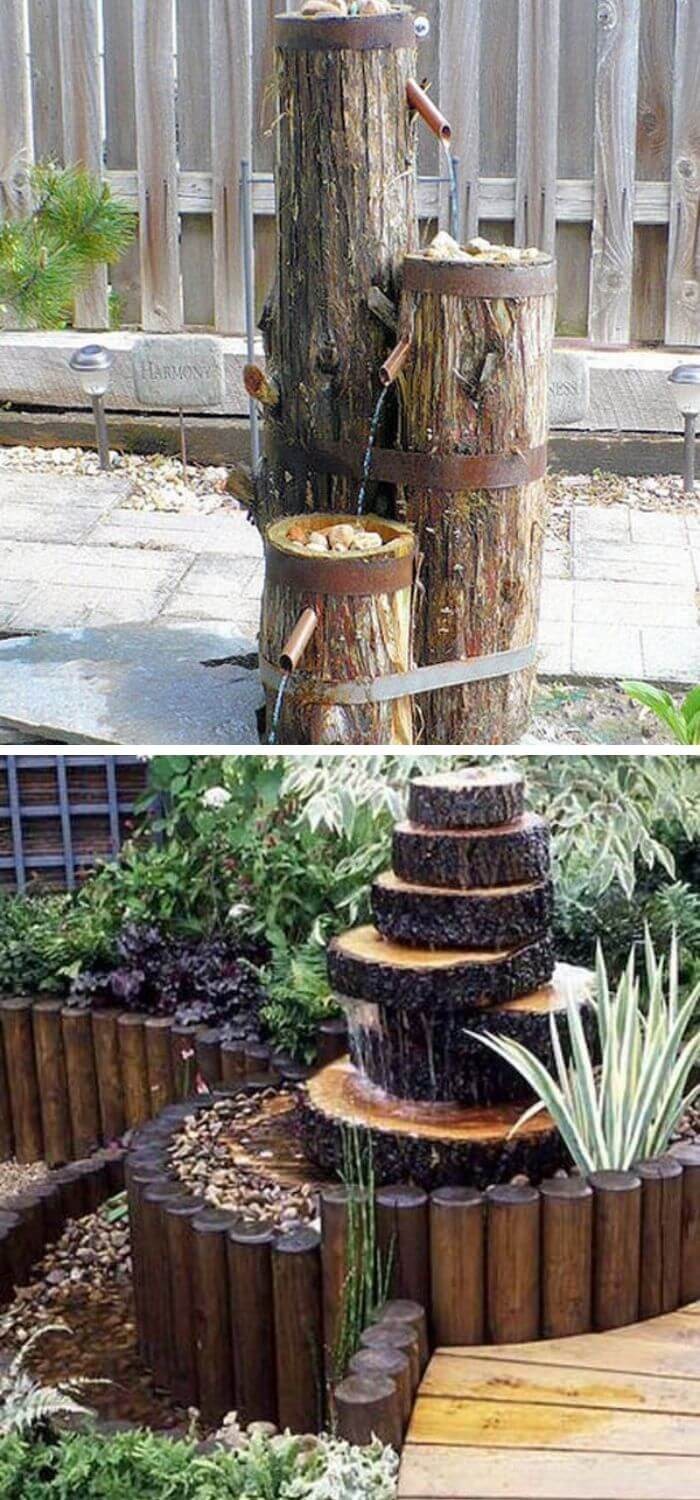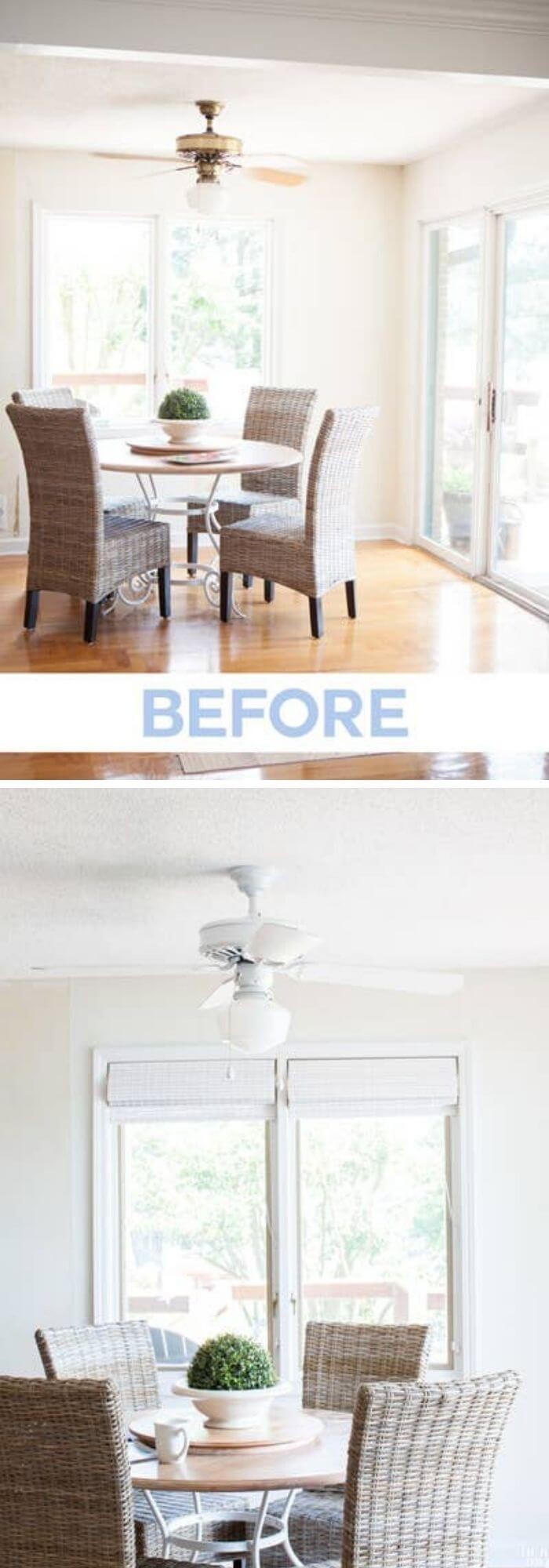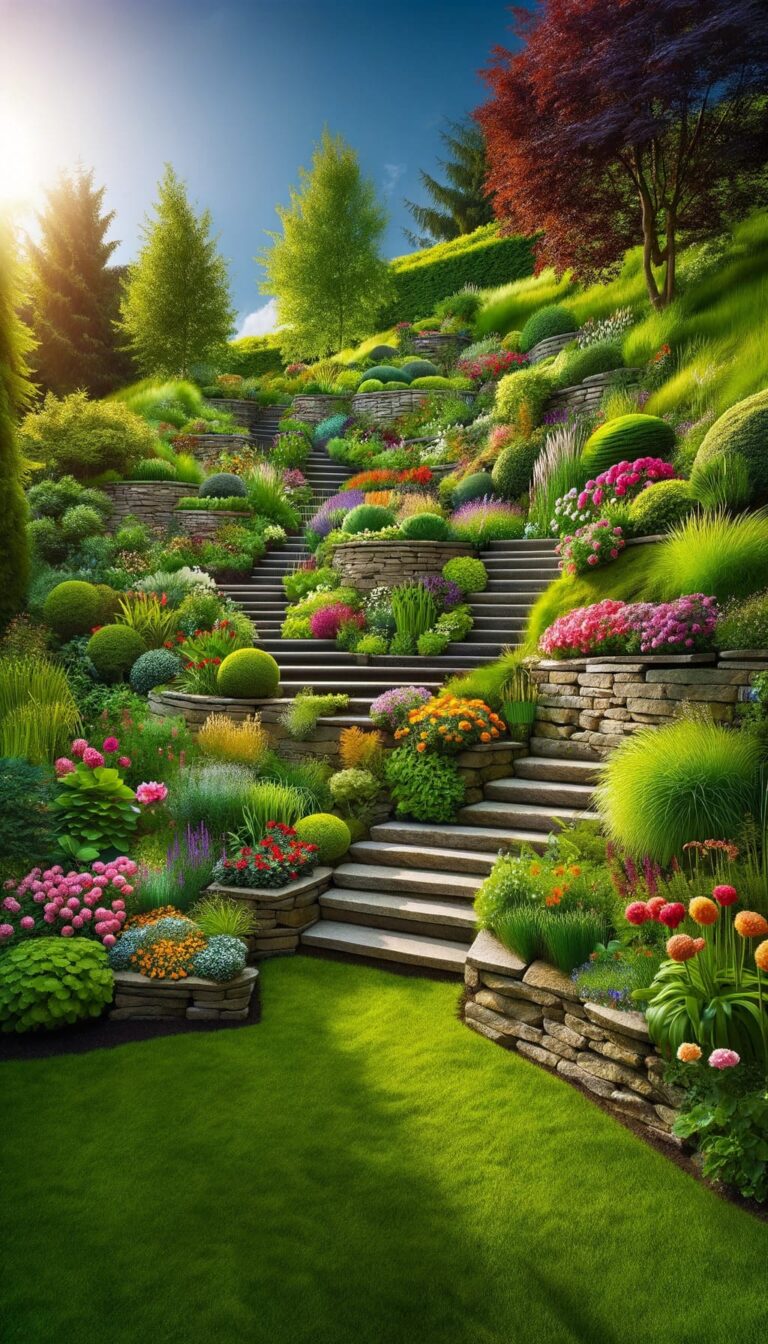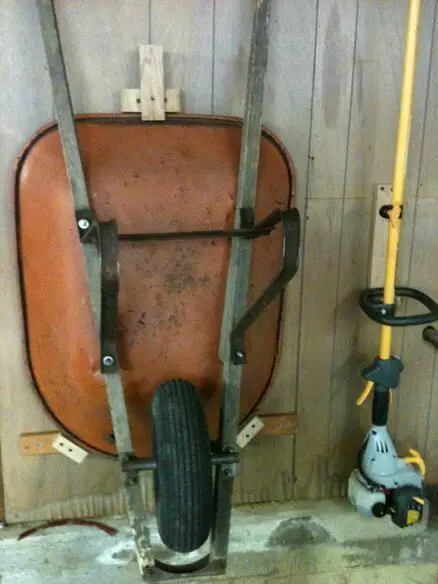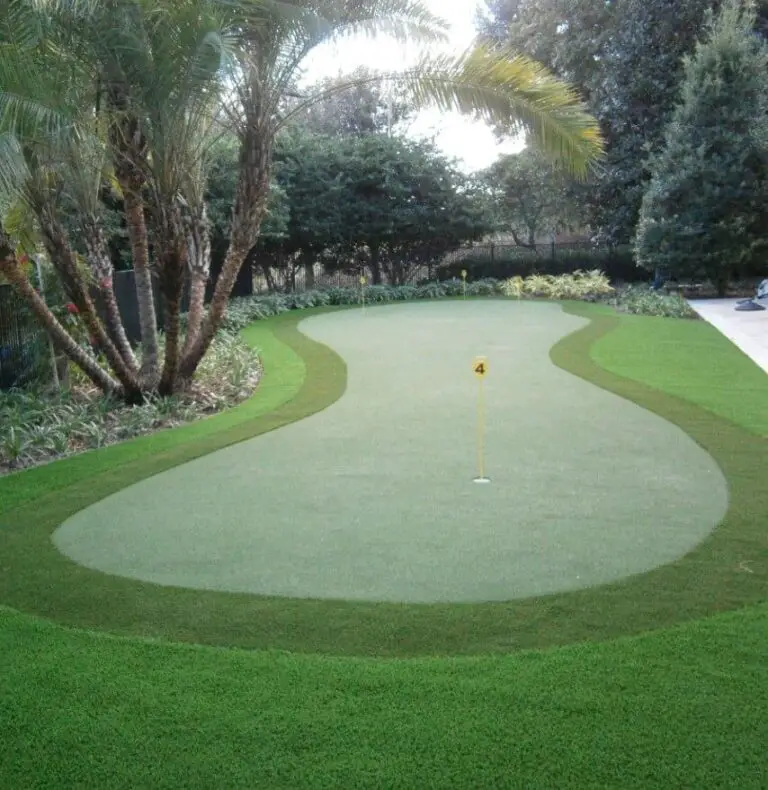24 Types Of Drywall Alternatives For Your Wall, Basement, Ceiling, Shed
While drywalls can provide a sleek and modern appearance, the installation process can be labor-intensive and prone to errors. Moreover, these materials have significant limitations when it comes to moisture resistance, durability, and soundproofing. For instance, drywalls are susceptible to mold and bacteria growth in humid environments and may produce hollow sounds due to their relatively low density.
Furthermore, they are not an ideal choice for areas with high foot traffic or exposure to water damage. As a result, many homeowners and builders seek alternatives that can provide a more reliable and efficient solution. In this article, we will explore various options that can help you avoid the pitfalls of traditional drywall construction.
What Is Drywall? What Is Drywall Used For?
Drywall has revolutionized the construction industry with its lightweight, easy-to-install, and versatile properties. Its origin dates back to 1894 when Augustine Sackett introduced the first drywall-like material called the Sackett Board. The term ‘drywall’ was coined because this innovative product eliminated the need for wet materials during installation, a significant advantage over traditional plastering methods.
The biggest breakthrough in drywall technology came during World War II, when there was a pressing need for cost-effective and labor-efficient construction materials. Since then, modern drywalls have evolved to feature lightweight gypsum-based materials, carefully processed into fine powder and pressed between two paper layers to form boards or sheets. These boards are then cut and nailed to the building’s wooden framing.
nbsp;The resulting gypsum walls offer a range of benefits, including non-toxicity, fire-resistance, and sound attenuation properties. They’re commonly referred to as Drywall, Sheetrock plasterboard, or wallboard.
Drywalls are specifically designed for walls, ceilings, partitions, and other architectural applications. Their unique characteristic is the ease with which they can be removed and reinstalled, making them a popular choice for construction projects.
Additionally, drywalls come in various sizes to fit specific spaces.
In commercial settings, drywall finds numerous applications. It’s used to conceal steel beams by wrapping columns, provide an easy method for topping off masonry walls, and add fire resistance to walls and ceilings. Its fire-resistant nature allows it to contain fire spread, giving occupants sufficient time to evacuate.
Drywall Alternatives for your wall
Wood Planks
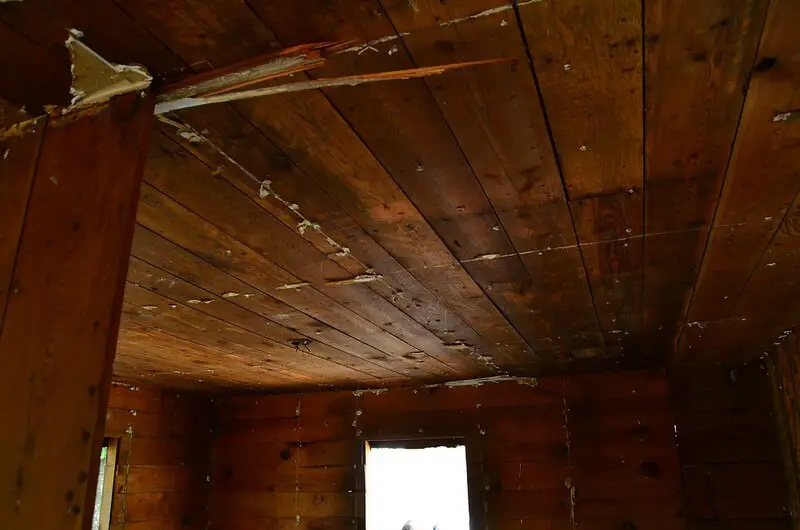
Wood planks have been a staple in construction for centuries, and it’s no wonder they remain a popular choice to this day. Their timeless elegance and rustic charm are just two reasons why homeowners adore them. But what really sets wood planks apart is the minimal maintenance required once they’re installed.
Unlike traditional drywall, which often needs constant upkeep, wood planks can be left alone after initial installation, freeing up your time for more important things – like enjoying the beauty of your home. And let’s not forget their cost-effective nature, making them a savvy alternative to drywall for those looking to keep costs in check.
Plastic Panels
When it comes to choosing an alternative to traditional drywall, plastic panels for walls are a popular option due to their versatility in being installed on various surfaces. The added reinforcement of fiberglass gives them an edge over other materials. One of the most significant advantages of plastic panels is their exceptional resistance to moisture and water, making them an ideal choice for areas prone to excessive humidity. This feature also eliminates the risk of mold growth.
Furthermore, plastic panels boast impressive stain-resistance properties, making them a practical choice for households with children and pets. Their durability makes them suitable for high-traffic areas like kitchens and bathrooms.
Plywood
When exploring drywall alternatives, it’s hard to overlook plywood, which offers a cost-effective and DIY-friendly solution for wall installations. One major advantage of plywood over drywall is its affordability – not only are the initial costs lower, but installation is also relatively straightforward. With just a few screws to secure the panel in place, you can achieve professional-looking results without breaking the bank.
While more expensive alternatives may offer additional features, plywood provides a solid foundation for your project, and with some added decorative flair, it’s a decision that’s unlikely to leave you regretting your choice.
Veneer Plaster
If you’re seeking an alternative to traditional drywall that still delivers on visual appeal, look no further than veneer plaster. Comprised of thin layers of drywall, these finishing solutions are designed to bring out the best in your installation techniques. One major advantage is that they come pre-finished, making them a breeze to install compared to traditional drywall methods.
To create a robust and sturdy wall with veneer plaster, consider starting with a base layer of drywall.
This process is surprisingly straightforward – simply apply the veneer over the existing drywall, and you’ll be done in no time. The best part? Veneer plaster dries quickly, allowing you to move on to the next stage of your project without delay.
Pegboard
Pegboards have gained popularity as a stylish and practical alternative to traditional drywall solutions. Their distinctive appearance can elevate the aesthetic appeal of any home, making them an attractive option for builders and homeowners alike. One of the key benefits of pegboards is their ease of decoration once installed, allowing you to customize your space with minimal effort.
Additionally, they offer a convenient way to expand your living or working area by providing extra storage for tools, equipment, and other items. As long as they are securely fastened to studs, pegboards can provide a seamless finish that complements any interior design scheme.
Lath and Plaster
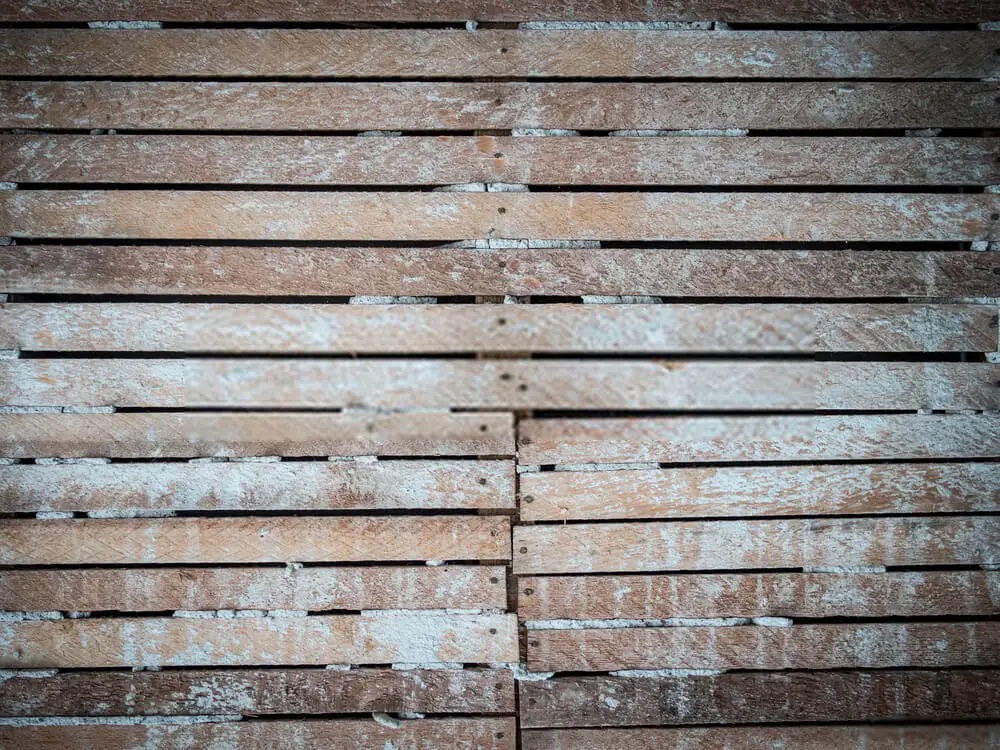
In today’s world, traditional lath and plaster construction methods are being replaced by faster and more efficient alternatives. Gone are the days of tedious installation processes that required the expertise of a professional contractor. Instead, modern lath and plaster systems have been designed with ease of installation in mind. This shift has made them an attractive option for those seeking a drywall alternative.
The traditional method involves installing wooden slats, or lath, horizontally across a wall to create a framework. Gypsum plaster is then applied over the lath, allowing it to seep into any cracks and crevices. While this system has its advantages, it can be time-consuming and labor-intensive, requiring the expertise of a skilled contractor to achieve perfection.
Wahoo Walls
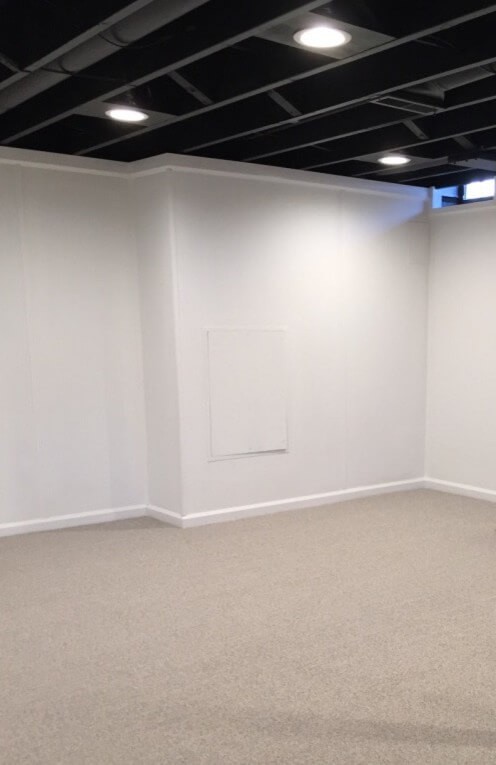
Wahoo Walls stand out as the most budget-friendly option for installation, thanks to their easy DIY nature. Unlike other wall solutions that require extensive drilling or fastening, Wahoo Walls simply click into place. While some users may choose to secure them with glue for added stability, it’s not a necessity. These versatile walls are commonly employed in basement areas, where their moisture-proof design ensures they won’t support mold growth.
Furthermore, Wahoo Walls can be used to repair leaks and protect your home from water damage, boasting a seamless drywall finish that will leave your space looking pristine.
Textured Wall Panels
While the previous options may have been a bit more laid-back, textured wall panels take luxury to a whole new level. It’s no wonder they’re often found in high-end establishments like boutique hotels and swanky cocktail lounges. Homeowners too are catching on to their allure, incorporating them into their own homes as a way to add an extra touch of sophistication.
Sure, these panels may come with a higher price tag than some other drywall alternatives – but many are willing to splurge for the unique look they offer. And the best part? Some designs even feature 3D options that can be easily installed on existing walls, making it easy to bring this high-end aesthetic into your own space.
Basement Wall Finishing Systems
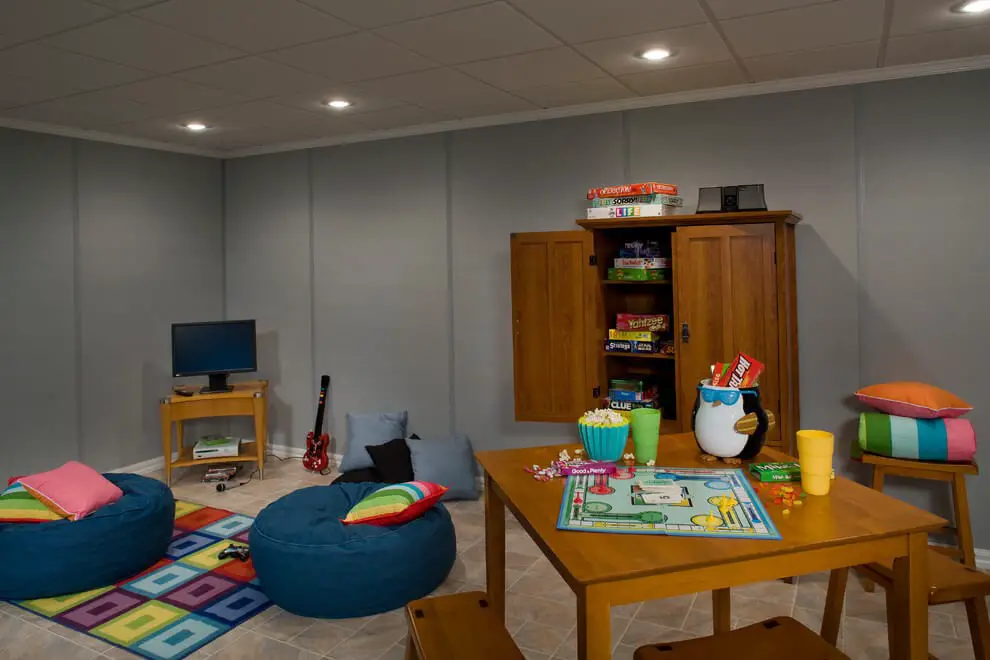
When it comes to basement wall finishing, pre-designed and pre-cut panels offer a convenient solution. These panels can be used to both insulate and finish your basement’s walls, which are sold as proprietary solutions specifically designed for basements. One of the key advantages of these systems is their water-resistance, making them an excellent choice for preventing mold growth in this often damp environment. However, it’s important to note that these systems can be quite costly.
Furthermore, due to their complexity and specialized installation requirements, they’re typically not suited for DIY projects, so homeowners should be prepared to hire a professional for the job.
Brick and Masonry
Since ancient times, stone and brick walls have remained a timeless choice for building construction. Their enduring popularity stems from their unique aesthetic appeal, versatility in design, and adaptability to various color schemes. For homeowners with suburban or rural properties, brick and masonry offer an excellent alternative to drywall due to their exceptional strength and durability.
Furthermore, they can be seamlessly integrated with drywall to create a visually appealing blend of textures and styles. While the initial investment may be higher than that of drywall, the long-term benefits of reduced maintenance and low upkeep costs make them a worthwhile consideration. Their resistance to dust and dirt also makes them an attractive option for households prone to these issues.
Cement Board
When it comes to finding an alternative to traditional drywall, cement board is definitely worth considering. Not only are these panels heavier than their drywall counterparts, requiring at least two people to lift during installation, but they also boast impressive water and mold-resistant properties – making them a top choice for homeowners living in humid environments.
Lath with Woodchip-Clay
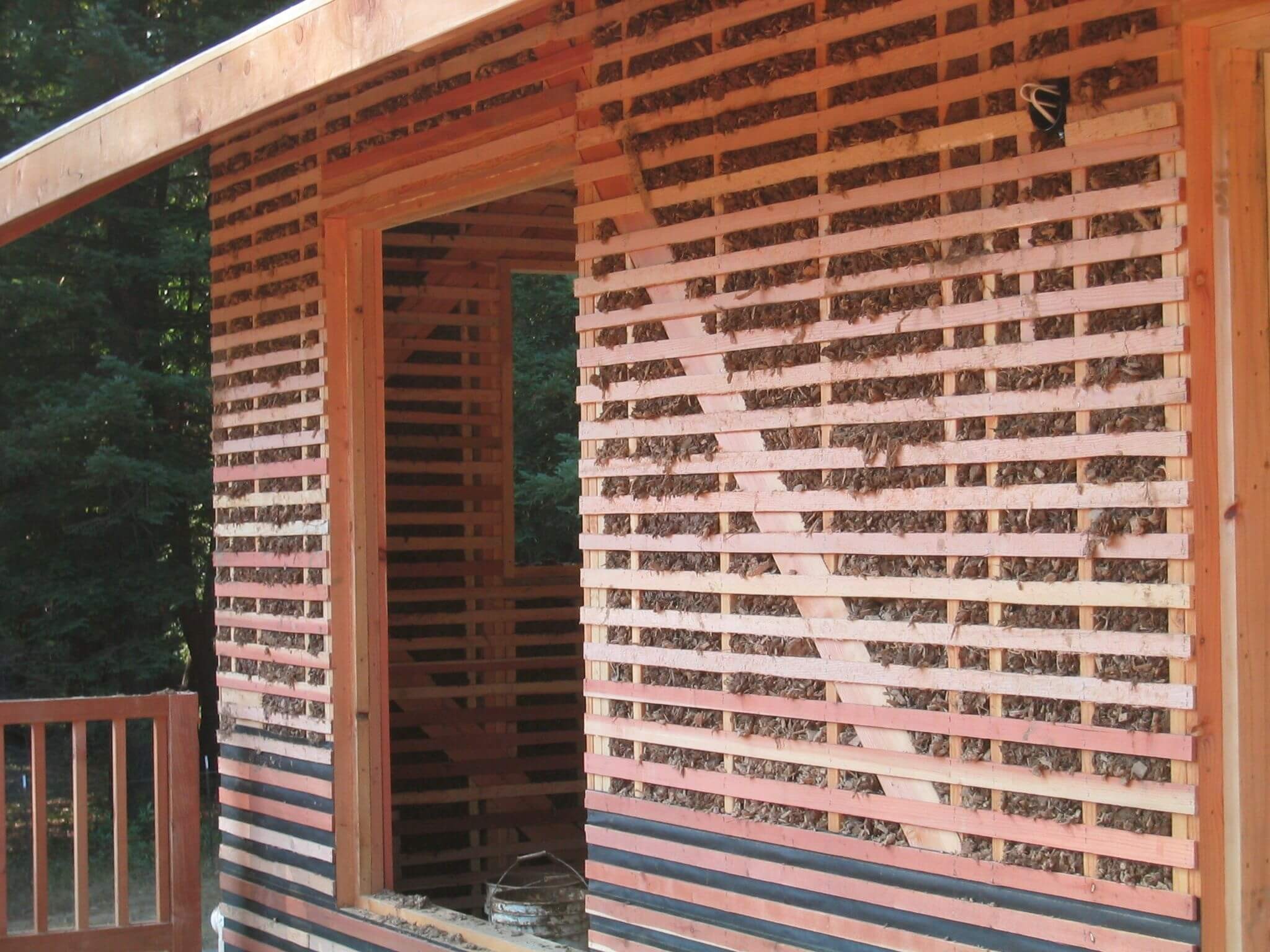
Combining the benefits of natural materials, lath and woodchip-clay walls blend clay slurry with woodchips to create a robust and insulating solution. The addition of woodchips enhances the structure’s strength, while the clay component provides thermal insulation, making this material particularly well-suited for cold climates or areas where long-term performance is essential.
Furthermore, lath and woodchip-clay walls demonstrate impressive noise-reducing capabilities, making them an attractive alternative to traditional plaster and lath solutions.
Fiberglass Reinforced Panels
Unlike drywall, fiberglass reinforced panels share a similar concept, but with a significant difference – they’re remarkably more durable. These panels boast strong, scratch-resistant materials that allow them to stand on their own, eliminating the need for installation onto an existing wall. This unique feature not only provides an extra inch of space, giving the room a more expansive feel, but also offers mold and bacteria resistance, making them a cost-effective and easy-to-install solution.
Fiberglass Mat Gypsum Panels
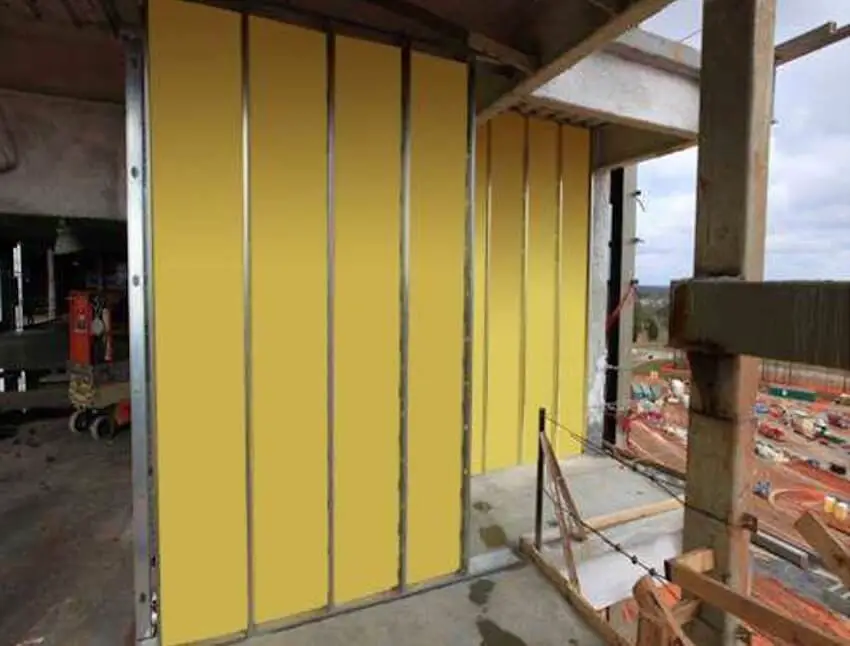
For those seeking an alternative to traditional drywall that boasts a rustic aesthetic reminiscent of painted panels, fiberglass mat gypsum is an attractive option. This material not only shares the same construction process as its drywall counterpart but also offers enhanced durability and moisture resistance due to its coated mat face and robust construction process. As such, it provides a long-lasting solution for homeowners looking to add a unique touch to their homes.
Exposed Concrete Block
The Instagram-worthy exposed concrete block adds a touch of modernity to your home’s interior design, boasting an unfinished yet stunning aesthetic. While the raw texture may give the impression that the wall is incomplete, this unique finish can be just as beautiful in its own right. For those who prefer a textured look, painting the cinder blocks remains an option.
Alternatively, embracing the unadulterated beauty of the exposed concrete block allows for creative freedom to pair it with complementary décors like glass and wooden furniture, creating a visually striking interior space.
Concrete Walls
Concrete walls from Concrete Provides offer a unique blend of minimalist design and industrial aesthetic, effortlessly elevating any home’s modernity. These versatile walls can be used to cover four entire walls or serve as a striking accent wall. One of the key advantages of concrete walls is their ease of maintenance – they require little to no special care, aside from occasional polishing for a flawless finish.
Brick
Instagram often showcases visually appealing spaces that incorporate brick as an alternative to traditional drywall. One of the key advantages of using brick is its design element, which allows it to be used for both small accent walls and large-scale installations. The uneven texture and warm tone of brick can add a unique touch to any room, providing a textured base that’s sure to make a statement.
When it comes to maintaining the integrity of brick, it’s essential to understand its natural properties. Brick is made from fired clay, which makes it porous and prone to moisture absorption. To keep your brick surfaces comfortable and dry, it’s recommended to seal them with a suitable sealer that can help fill in pores and holes.
Despite being a popular choice for its durability and strength, brick can be challenging to clean and maintain.
However, by adding a layer of paint, you can not only enhance the aesthetic appeal but also make it easier to keep your brick surfaces clean.
Sheet Wood
Sheet wood, a versatile and affordable material, is an ideal choice for DIY enthusiasts. Its ease of use makes it a cost-effective alternative to drywall, allowing homeowners to add a touch of sophistication to their finishing projects. When paired with decorative elements, sheet wood can evoke a charming country feel, perfect for those seeking to infuse their space with rustic charm.
Cork Wall
The versatility of a cork wall is a major draw for those who enjoy expressing their creativity through design. With its removable and reusable nature, it offers the perfect canvas for experimenting with various patterns and adding cherished photos throughout your home. However, it’s essential to exercise caution when hanging items on the board, as heavy materials can lead to premature wear and tear if not handled carefully.
Corrugated Metal
Have you ever stepped into a home and spotted those waxy sheets on the roadside or barns? Those are actually corrugated metals that can be repurposed for indoor use. They’re particularly well-suited for smaller accent walls, but may not be ideal for larger areas like all four walls. Another affordable option is drywall, which is easy to install and purchase. However, when it comes to DIY installation, cutting the corrugated metal to the correct size can be a challenge.
You’ll need specialized tools like metal shears and a table saw with a custom blade to get the job done. In this case, hiring a professional might be the more practical choice.
Vinyl Siding
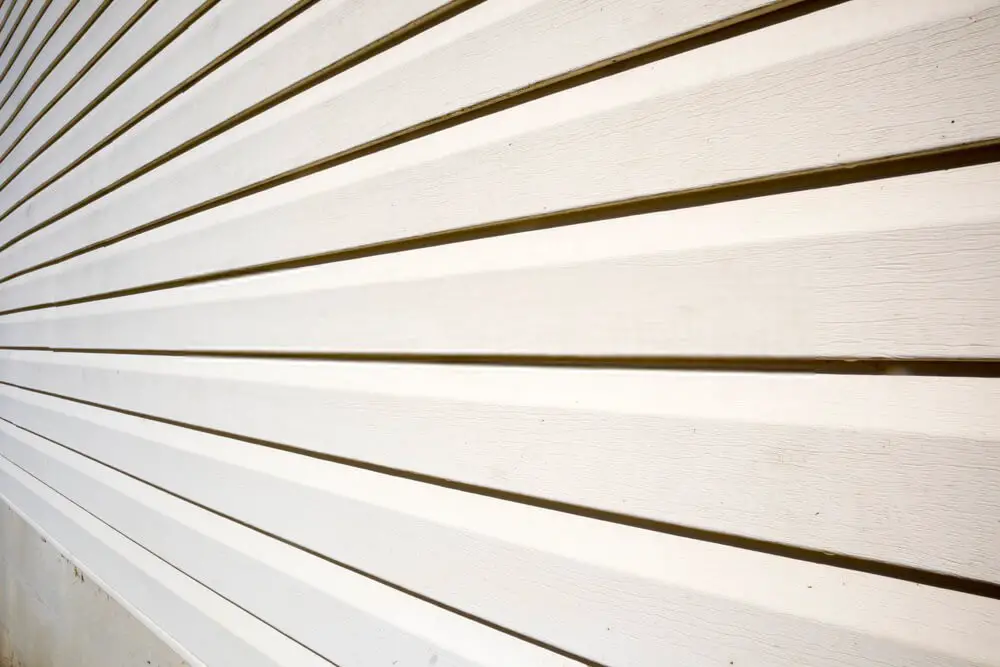
Vinyl is a ubiquitous material in home construction, making it an attractive alternative to traditional drywall. Its popularity stems from its ease of installation, which comes in the form of plastic panels that can be quickly put into place. These versatile panels are particularly well-suited for open-air patios with partial roof coverage, offering a simple solution for protecting walls from rain and wind while still allowing natural light to filter through.
Additionally, vinyl’s smooth surface makes it easy to clean, reducing maintenance tasks and keeping your space looking its best.
Everlast Wall Panels
Everlast panels stand out for their remarkable durability, capable of withstanding harsh conditions without compromising their integrity. Their robust properties make them impervious to moisture, mold, scratches, and stains – all common culprits that can damage walls over time. By eliminating these liabilities, you can rest assured that your walls will remain in prime condition for years to come.
As water-resistant materials, Everlast panels are particularly well-suited for high-humidity areas like bathrooms, laundry rooms, and kitchens, where their ease of cleaning is an added bonus. Moreover, they can seamlessly cover damaged drywall, providing a seamless solution for any renovation or restoration project.
Alternatives to Drywall Ceilings
For decades, drywall has been a go-to solution for concealing less-than-ideal ceilings. However, homeowners are no longer limited to this single material option. In fact, a plethora of alternative solutions have emerged, allowing individuals to bring a touch of elegance and modern flair to their ceiling designs.
Ceiling Planks
For those seeking a rustic aesthetic, hardwood planks present a compelling alternative to drywall ceilings. By installing these planks in rooms with shorter ceilings, you can effectively close in the space and create a cozy atmosphere. When choosing ceiling planks, opt for ones that can be easily painted with white or light colors to achieve the desired visual effect. One of the primary advantages of ceiling planks is their lightweight nature, which makes them simple to install.
With just a nail gun and ladder required, you can complete the job efficiently, without requiring extensive expertise or specialized tools.
Drop Ceilings
When it comes to interior design, one often overlooked yet effective feature is the drop ceiling, also known as a suspended ceiling. This unique design involves creating a lower section of the ceiling compared to the surrounding areas, achieved through the use of bars and panels suspended by wire. The result is a visually striking design that can significantly impact the overall aesthetic of a space.
In particular, the drop ceiling is well-suited for smaller rooms like kitchens, where its modern feel can help create a cozy atmosphere. One of the key benefits of this design is that it allows homeowners to define their living space without relying on walls. Additionally, the drop ceiling provides an ideal solution for concealing recessed lighting, making it a popular choice among those looking to add some visual interest while also maintaining functionality.
Alternatives to Drywall in Basement
Transforming your basement into a cozy oasis just got a whole lot easier! A unique combination of lath frames, bark-free chips, and clay can create a quieter, more insulated, and cooler space. This innovative drywall alternative outperforms traditional lath and plaster in terms of noise reduction. Wahoo walls also offer an excellent substitute for drywall in your basement, boasting impressive water-resistance and mold-resistance properties.
Given the high risk of water leaks in basements, it’s crucial to invest in materials that can withstand these challenges. Thankfully, wahoo walls excel in this regard. By opting for one of these affordable and easy-to-install alternatives to traditional drywall, you’ll not only enjoy a more comfortable living space but also save money in the long run.
Drywall Alternatives for Garage
When it comes to equipping your garage, you’re likely seeking a solution that offers strength, durability, and ease of maintenance. Fortunately, cement board panels can provide all these benefits while also elevating the aesthetic appeal of your garage. These versatile panels come in a range of colors and textures, allowing you to inject some personality into an otherwise utilitarian space.
By choosing from this variety of options, you can create a rustic charm that adds visual interest to your garage.
Drywall Alternatives for Shed
When it comes to creating an inviting and comfortable atmosphere in a shed, there’s no need for elaborate cooling systems or extensive renovations. Instead, consider alternative materials that can naturally regulate the temperature and make the space feel cozy. A pegboard is an excellent option, offering a unique aesthetic while providing natural insulation. Alternatively, beadboard can also be used to create a charming environment by subtly breaking up the space with subtle seams.
Drywall Alternatives for Attic
The humble attic space can be transformed by incorporating brick features. The exposed bricks add a touch of personality to the area, and painting them a crisp white hue can create an airy, spacious atmosphere.
Drywall Alternatives for Bedroom
While stone and bricks may have a more rustic appearance than other materials, their raw look can be a major selling point for interior walls. Exposed or painted, they bring a unique character that’s perfect for creating a cozy bedroom atmosphere. Additionally, these natural options are incredibly durable, with the potential to withstand the test of time without needing frequent replacements.
Furthermore, their recyclable nature makes them a sustainable choice that can even increase the value of your home.
Wall without Drywall
If you’re considering building an insulated structure, opting for nothing beyond the concrete blocks can be a great choice. Some individuals prefer to leave their blocks exposed, embracing a unique and rustic aesthetic. This approach works particularly well in basements, where a natural, earthy look can add character. Alternatively, you can select blocks that bring warmth and texture to your finished walls, effectively creating a cohesive visual scheme.
By choosing the right material for your walls, you may not need any additional covering.
Conclusion
When seeking options for drywall, the sheer variety of choices can be overwhelming. The ultimate decision hinges on factors such as room type, budget, and desired ambiance. It’s essential to factor in unique features that each material may offer. For instance, consider waterproof options for areas prone to heavy rainfall or warm alternatives for extremely cold regions to enhance insulation.
Additionally, don’t overlook drywall alternatives that can be seamlessly integrated with décor elements to elevate the room’s aesthetic appeal. If you opt for a paintable surface, painting the walls can also prove an effective way to add visual interest. Moreover, when purchasing alternatives, it’s crucial to consider the installation process and whether you’ll be taking on the task yourself or hiring professionals to ensure a top-notch finish.

